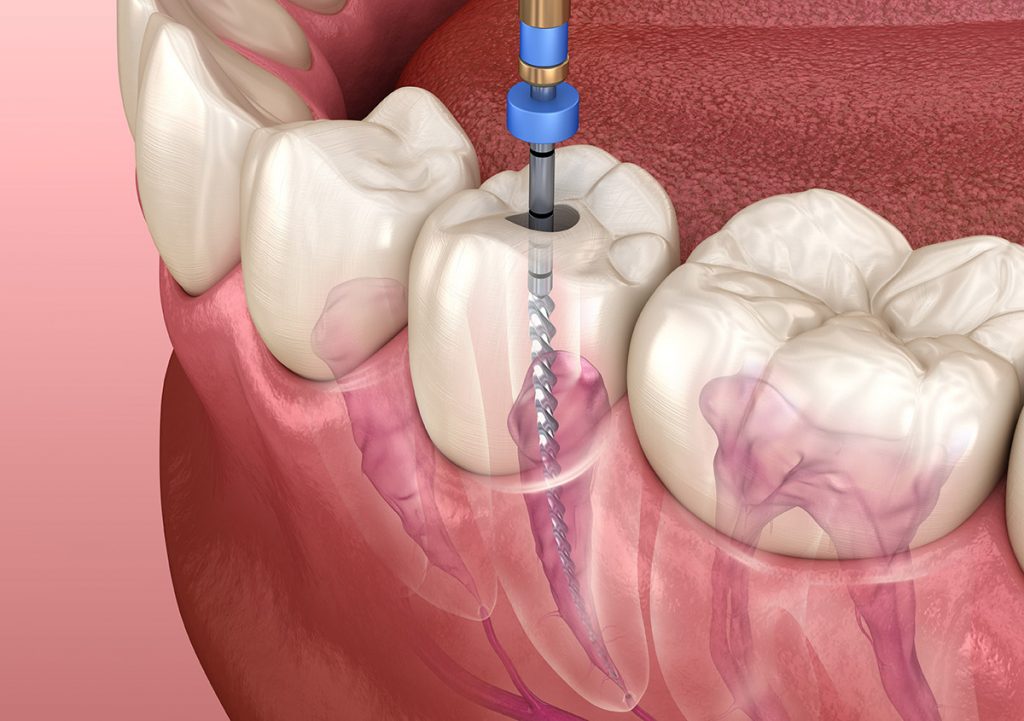Rusted Roots?
It’s understandable you’d be concerned — maybe even scared — about the possibility of having a root canal procedure. Over the years, root canals have become synonymous with serious pain; but they’ve actually come a long way.
New technology now enables your root canal dentist to perform the procedure virtually pain-free. And once the root canal procedure is complete, it’s likely you’ll be free of pain afterwards, too!
Root canals are needed when a dental infection, or tooth decay, reaches the pulp chamber of the tooth. The infection destroys the nerves located within the root of the tooth, eventually causing the tooth to die. Years ago, the only option for this type of dental problem was a tooth extraction. Now, thanks to dental technology, your root canal dentist can save your tooth even there’s a major infection!
A Root Canal Dentist Feels Your Pain
If you’re in need of root canal therapy, you may be having trouble eating or sleeping. A toothache or sensitivity to hot or cold is common for those with infected pulp, and you may even have swelling or tenderness in the gums. Your discomfort is a sign you need to see a root canal dentist — and fast! While toothache remedies may relieve your pain, they won’t fix your problem. Pain from infected root canals is often a signal that you need professional dental treatment to save the tooth.
Of course, if you do have any kind of tooth discomfort, it’s important not to self-diagnose. Only a root canal dentist can properly diagnose the pain and provide the appropriate treatments.
When serious infection or damage is present, your dentist may refer you to a root canal specialist (an endodontist).
Getting Root Canal Therapy
Luckily, you don’t need the nerve for a tooth to survive — the nerve’s purpose in a grown tooth is to provide nutrients and send signals to the brain, letting you know when dental problems come up. Now that you know your tooth needs help, your root canal dentist can take the appropriate measures to fix it.
To keep you comfortable, you’ll receive a shot of local anesthesia — usually the most painful part of root canal therapy. You may feel a slight sting as the anesthesia enters the tissue, but it should only last for a second or two. (If necessary, your dentist may offer sedation dentistry to relieve any dental anxiety you might have.) Once the area is numb, your dentist will drill through the tooth’s crown and remove the pulp and nerves located within the root. Like a tooth filling, the area is cleaned and the root canal is filled to keep the infection from returning. Your dentist will then cap the tooth to further protect it. You may experience some sensitivity for a few days as the tooth heals.
No Time Like the Present
If you have symptoms of an infection in your root canals, don’t ignore them! The goal is to save your tooth rather than extract it, and with good reason. Missing teeth can cause bite problems, shifting teeth and jawbone loss. On the other hand, root canals are 95 percent effective, and a successful procedure can help you keep that tooth for a lifetime and prevent other dental problems.
Remember, your dentist wants to save your tooth just as much as you do! And the sooner you have a root canal treatment, the better off you’ll be. So if you’re experiencing any of the symptoms mentioned in this article, see a dentist.

